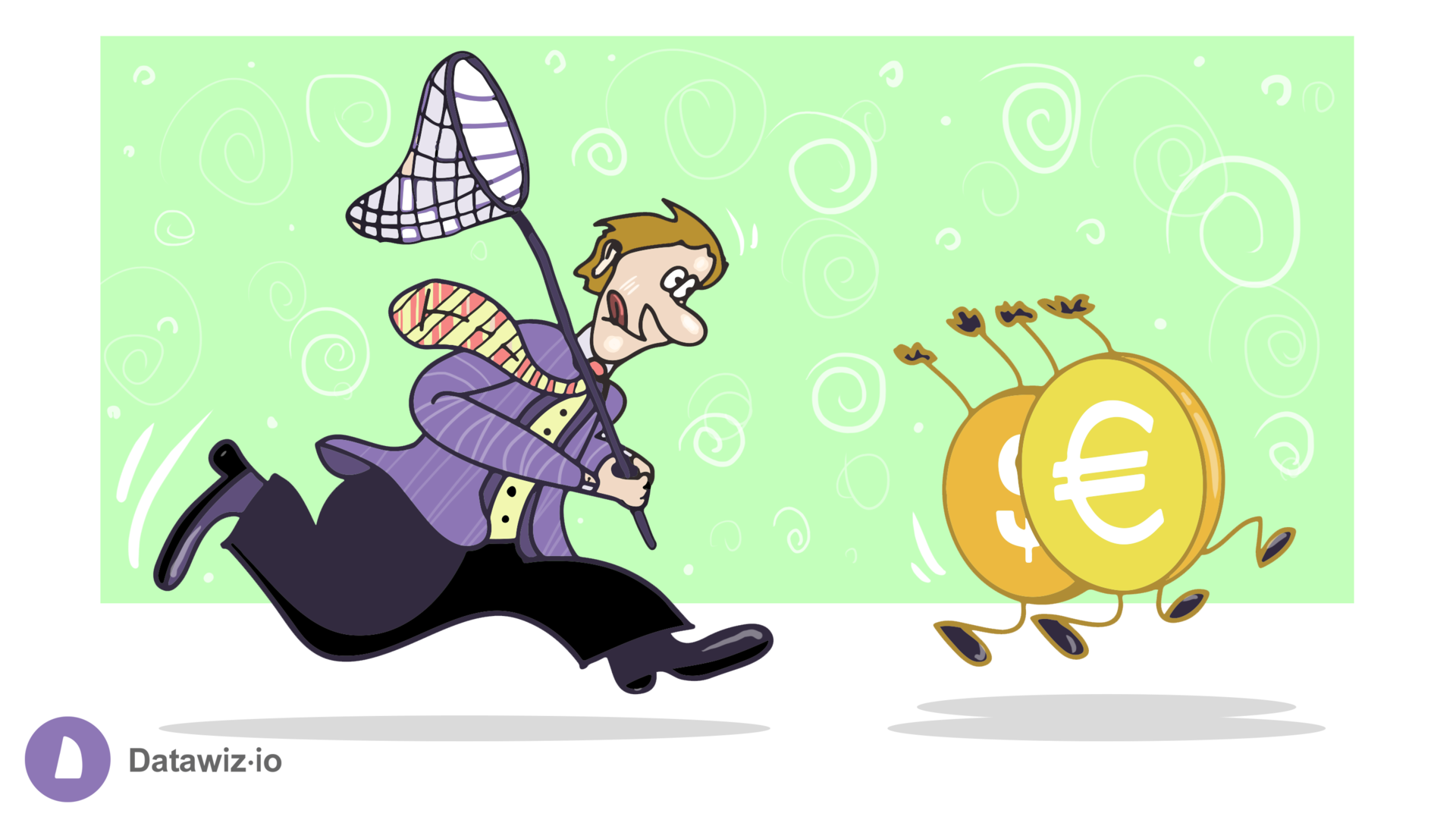How do sales fluctuations affect turnover?

This publication is a real case from Datawiz.io , in which we describe how to find products and categories with large sales fluctuations, and how sales fluctuations affect customer behavior.
While analyzing the data for the trading network, we faced a problem: with almost equal sales volumes per day in two stores of the network, the turnover in one store of “Shop1” increased, and in the store of “Shop2” - decreased.
')
They assumed that a sufficient number of key categories of goods (goods with a high frequency of entering checks) are not being imported into the Shop2 shop. Our task was to find such categories.
Then we calculated the coefficients of variation (V) , for each product group in both stores:
V = std / avg , where
std is the standard deviation of sales for a given period;
avg - arithmetic average of the number of sales for the period.
The ratio shows sales fluctuations.
The smaller the ratio - the smaller the variation in the number of goods sold, the smoother (more stable) the sales schedule for the period looks.
The higher the coefficient is, the more unstable sales are and the fluctuations and failures in sales stand out sharply on the chart.
We calculated the coefficients of variation in sales of goods of all categories for two stores per year. But this method of comparative analysis turned out to be ineffective, since sales of seasonal categories of goods are highly dependent on the season (a classic XYZ analysis turned out). We are also interested in sales of categories of goods, the demand for which affects the turnover, regardless of the season.
Then we conducted a comparative analysis of sales fluctuations in two stores over the last month (in this example, September 2014). And revealed for the shop “Shop2” the most problematic product categories:

Our assumption that an insufficient quantity of goods from these categories is delivered to the store turned out to be true.
As can be seen from the table, at approximately equal average sales for the month, the “Shop2” store has a very large standard deviation of sales (std), and a correspondingly high rate of sales fluctuation.
This means that there were days in the store when goods from key categories were either not on the shelves or there were not enough of them.
Consider the “Dairy Products” category in more detail, since sales of this category make up a large percentage of the total turnover. The graphs below show the dynamics of sales of the “Dairy Products” category by the number of units sold for each day of the period.

For the shop “Shop1” the coefficient of variation of sales of this category for the month is 0.09 or 9.0%. Such sales can be called homogeneous, since the fluctuations are small. Usually, in FCMG, the permissible sales fluctuation rate is 0.2 (20%) for the categories of goods that form the basis of the shopping basket.
For the shop “Shop2” the variation coefficient is 0.36 or 36.0%

Such sharp fluctuations in sales affect not only the turnover, but also the behavior of the buyer. Whenever the buyer does not find the product he needs, this has a negative effect on his loyalty, and as a result may lead to the loss of regular customers. Therefore, each subsequent failure in sales will be deeper and the exit from it will be longer than from the previous one. In addition, every time a buyer does not find a key product in the store, after which he came to the store, the probability of buying other products of interest to him falls.
To determine the possible loss in sales of interrelated product categories, consider the key product category “Dairy products” in the shop “Shop2” using association rules. Using the APRIORI algorithm, we identify all paired relationships with this category. The table displays all related categories of goods that are bought from the key.

The “Reliability” indicator in the table means that consumers buying products from the “Dairy Products” category
- in 34% of cases buy goods from the category “Prom. products";
- in 41% of cases - buy goods from the category "Confectionery", etc.
For example: a customer buys milk or kefir 3-4 times a week at a supermarket near his house. Often, he buys cookies and fresh bread, as well as a package at the checkout. The first few times, without finding on the shelves of the dairy products he needs, the buyer may continue to buy bread and pastries at this store. But over time, prefer another supermarket, even if it is not so close.
It is very difficult for retailers with large sales fluctuations to keep regular customers, and even more so to attract new ones. Thus, the store loses its turnover not only due to the lack of key products, but the purchase of related categories is significantly reduced. You can solve this problem like this:
- daily data analysis;
-identification of key products and tracking their coefficient of variation;
-timely response to changes in the dynamics of sales;
-the use of association rules to identify related products to increase profitability.
This is a very simple case, but we face this problem literally every day. Even large retailers do not always respond promptly to the lack of goods in the store.
Source: https://habr.com/ru/post/241383/
All Articles